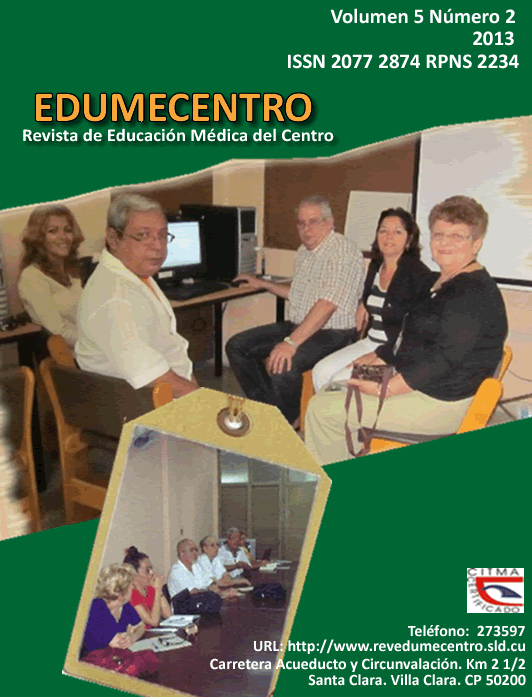Educational software for the teaching and learning of Rorschach test
Keywords:
Rorschach test, Educational software, Psychology.Abstract
The research points out the need to improve the teaching and learning process of the projective technique called Rorschach test. A stratified sampling by academic year and way of entry was conducted, with a sample of 50 students and 10 teachers from the Lidia Doce Medical University Branch in Sagua la Grande. The study consisted of four stages: exploration, planning, implementation and evaluation. Educational needs were identified. The results were triangulated with the application of the nonparametric statistical test one-way ANOVA and the information obtained. The engineering of the educational software "Sedror" was obtained with the methodology RUP and the UML language. The system was developed with the Adobe Director 11.5 visual tool. The product was assessed by experts’ criteria. This was the basis for establishing points of agreement and disagreement between the content and the educational technology.Downloads
Download data is not yet available.
Published
2013-04-15
How to Cite
1.
Rodríguez Jiménez D, López Feito M, Rodríguez Arias S. Educational software for the teaching and learning of Rorschach test. EDUMEC [Internet]. 2013 Apr. 15 [cited 2025 Oct. 13];5(2):34-4. Available from: https://revedumecentro.sld.cu/index.php/edumc/article/view/234
Issue
Section
ARTÍCULO ORIGINAL
License
Los autores que publican en esta revista están de acuerdo con los siguientes términos:- Los autores/as conservarán sus derechos de autor y ceden a la revista el derecho de primera publicación de su obra, el cuál estará simultáneamente sujeto a una Licencia Creative Commons Reconocimiento-NoComercial-CompartirIgual 4.0 Internacional (CC BY-NC-SA 4.0) que permite a terceros compartir la obra siempre que se indique su autor y su primera publicación esta revista.
- Los autores pueden establecer por separado acuerdos adicionales para la distribución no exclusiva de la versión de la obra publicada en la revista (por ejemplo, situarlo en un repositorio institucional o publicarlo en un libro), con un reconocimiento de su publicación inicial en esta revista.
- Se permite y se anima a los autores a difundir sus trabajos electrónicamente (por ejemplo, en repositorios institucionales o en su propio sitio web) antes y durante el proceso de envío, ya que puede dar lugar a intercambios productivos, así como a una citación más temprana y mayor de los trabajos publicados (Véase The Effect of Open Access) (en inglés).







